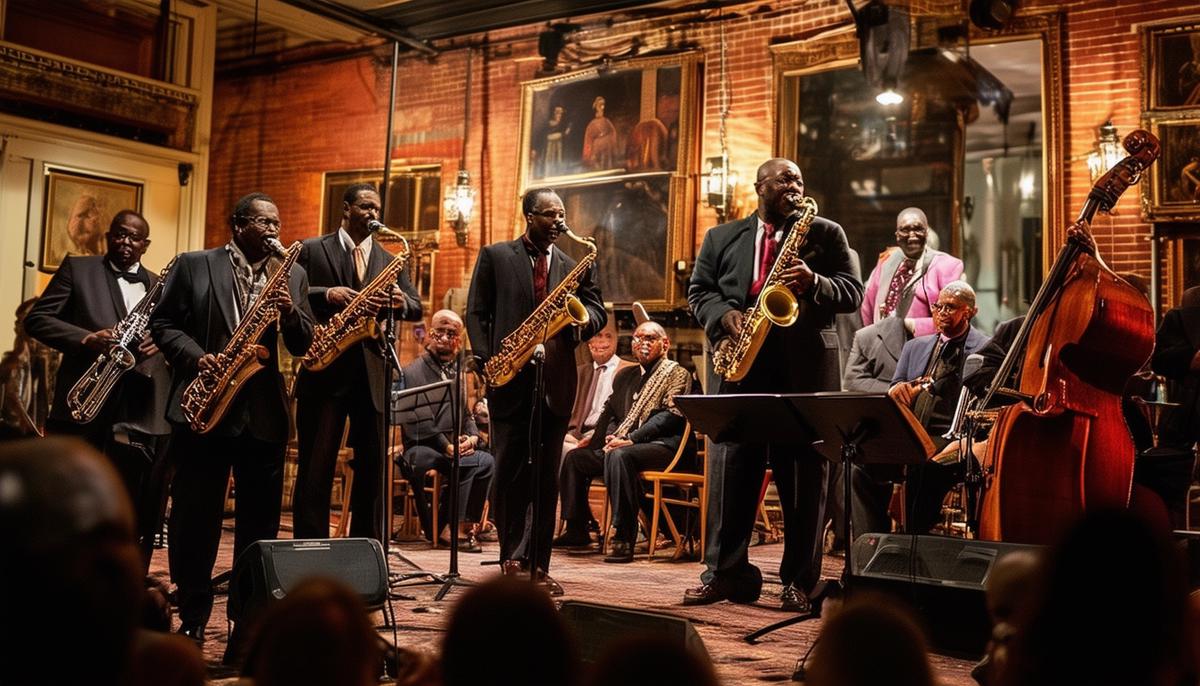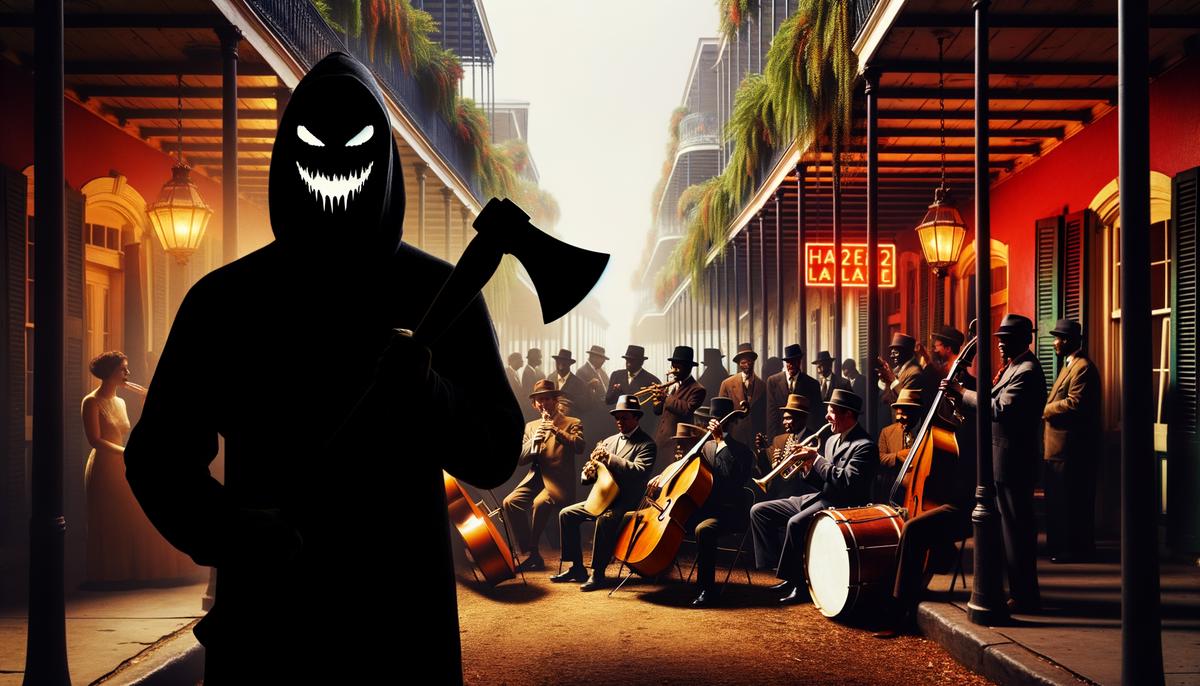The Axeman of New Orleans: A Jazz-Loving Killer
New Orleans, a city full of life and music, hides a dark secret. In 1919, a mysterious figure known as the Axeman terrorized its streets.
Picture this: It's a warm night in the French Quarter. The smell of flowers mixes with the river's scent. A saxophone plays in the distance. But there's an uneasy feeling in the air.
People whisper,
"The Axeman is coming."This wasn't just a scary story. The Axeman was real, killing people with axes and razors.
Here's the strange part: he loved jazz. On March 13, 1919, he sent a letter to the newspapers. He said he would spare anyone playing jazz in their homes that night.
Imagine the city that night, filled with music. Every home became a jazz club, playing for their lives.
Who was the Axeman? A real killer or a made-up monster? No one knows for sure. That's what makes the story so creepy.
The Axeman is now part of New Orleans legend. His story mixes fear and fascination, just like the city itself.
So, next time you're in New Orleans, listen carefully. If you hear a lonely saxophone at night, remember the Axeman's strange demand for a city-wide concert.
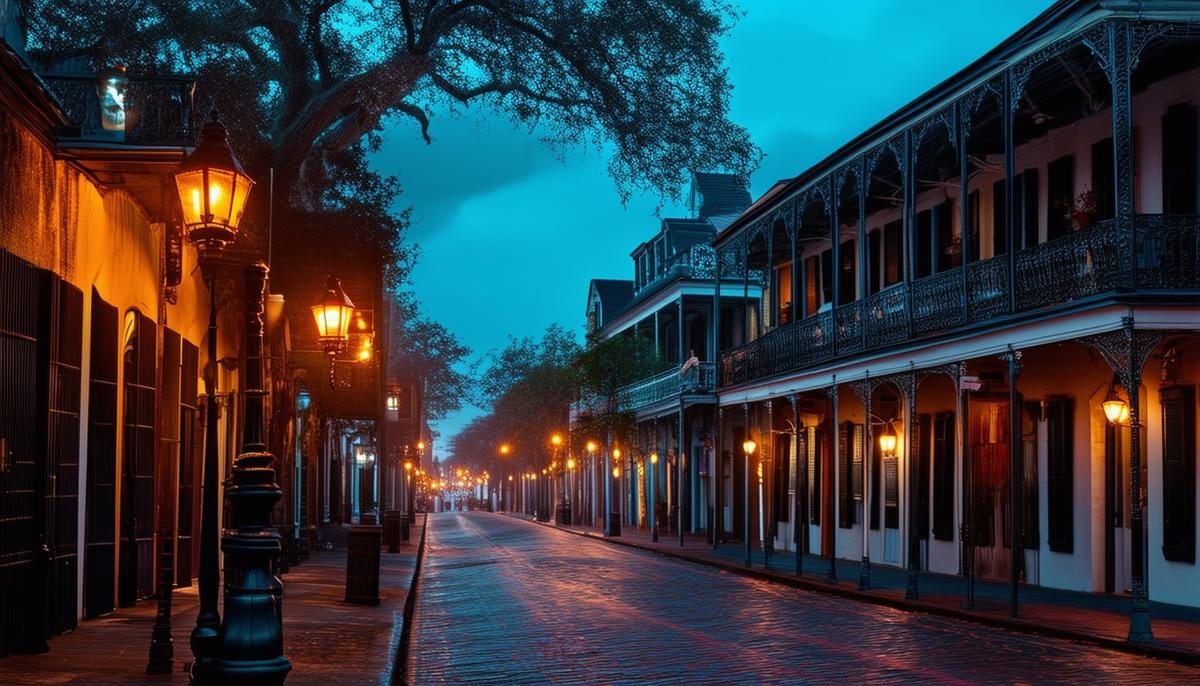
That night, New Orleans felt alive with fear and music. The French Quarter was full of shadows and light. The air was hot and heavy.
As midnight got closer, people grew more nervous. Even the trees seemed to shake, their leaves making music of their own.
The whole city was on guard. Every home became a fort, protected by the sound of trumpets and saxophones. People moved carefully, like dancers following a scary tune.
New Orleans was fighting back with music. It wasn't just playing jazz; it was using it as a shield against a killer no one could see.
If you visit New Orleans, think about this story. Imagine the sound of a trumpet cutting through the night air. Feel the chill when you hear a sad song. Remember how the city faced its fears with music.
New Orleans loves its mysteries. They're part of what makes the city special. Even when scared, it finds a way to keep dancing.
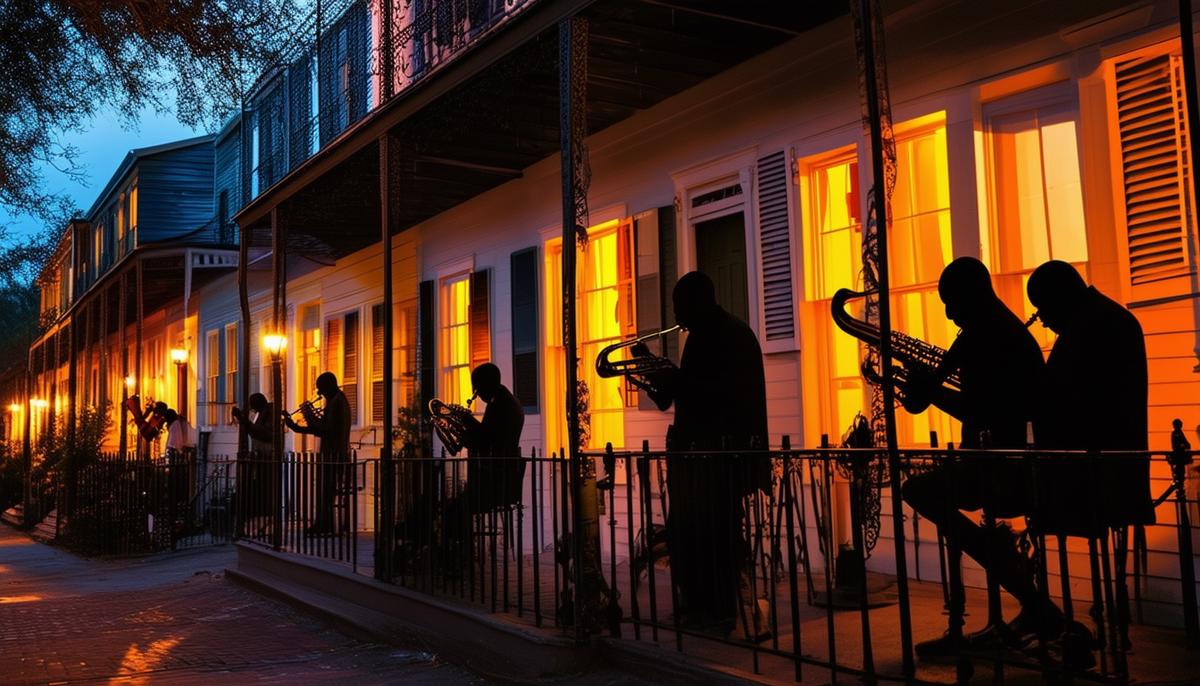
As midnight came close, New Orleans grew quiet. But inside homes, families huddled together, listening to jazz. They hoped the music would keep them safe from the Axeman.
The killer's letter was still fresh in everyone's minds. It had appeared in the newspaper, starting with a strange greeting:
"Esteemed Mortal."
The Axeman wrote, "I am very fond of jazz music." He promised not to hurt anyone in a home where jazz was playing at midnight.
So, the city played. Saxophones and trumpets blared from every house. It was like a giant concert, but one played out of fear.
As the clock struck twelve, the music got louder. Musicians played as if their lives depended on it—because they did.
The Axeman didn't attack that night. True to his word, he left the jazz-filled homes alone.
Today, the Axeman is part of New Orleans history. His story reminds us how music once saved a city from fear.
Next time you're in New Orleans and hear jazz late at night, think of the Axeman. Remember how the city faced a killer with nothing but music and bravery.
A Jazz Night to Remember
New Orleans, a place where history happened with drama, saw a night like no other. In homes and on streets, jazz ruled. Each note showed life's fierce push against death. To New Orleans folks, jazz was more than music. It was a sign of unity and strength.
The night was thick with feeling. Trumpets and saxophones carried hope and fear. Parents held their kids close, the music wrapping around them like a safety blanket against the Axeman. It looked like a party, but it was a fight to live.
Think about it: music as a shield against death. Jazz, with roots in Black history, came from people who used rhythm to tell stories and handle hard times. That night, jazz became almost holy—a wall of sound against danger.
"If the Axeman spared you, you'd never forget the odd mix of beauty and fear, like dancing with death to fierce music."
Strong emotions ran through every song. Working people put their hearts into tunes to keep their families safe. Old folks cried as memories mixed with worry. You could feel the weight of the night in your bones with each chord.
World War I had just ended. Jazz was becoming the sound of the 1920s. And here was New Orleans, using jazz to fight off a killer.
When dawn came, New Orleans took a deep breath. They had faced fear with harmony. The Axeman hadn't struck. Maybe the city's spirit in song had scared him away.
People left their homes tired but proud. They had lived through a Jazz Night to Remember. It became a story of strength, showing how a city sang when it could have hidden in fear.
If you're ever in New Orleans at night, let the music wash over you. Remember that jazz isn't just music. It's proof of courage. It's a bold note against darkness. So visit a club, enjoy the rhythm, and toast to a city that turns fear into unforgettable music.
Encounters with the Axeman
Years later, stories of meeting the Axeman began to spread. One came from an old woman named Isabella, who had lived through that scary time.
Isabella's eyes would look far away when she told her story. "I was just a girl, maybe thirteen," she'd start softly. "Mama had us all in the parlor, the record player going like our lives depended on it—which they did."
She'd close her eyes and picture it: the warm light on her mother's worried face, her brothers and sisters trying to smile. And always, the jazz music playing, keeping them safe.
"Every part of the house seemed scary," she'd say, her voice shaky. "Then suddenly, it felt like everything stopped. Not quiet like peace, but quiet like before a storm."
Her heart would pound, remembering that fear. The window looked darker, the shadows deeper. She thought the Axeman might be outside, sneaking around their house. Normal sounds—a creaky floor, leaves moving—seemed like signs of attack.
"I felt trapped," Isabella would say, "stuck in my own home by music that was both comfort and cage."
As she told the story, her thoughts mixed with memories: the smell of flowers, the sound of bugs blending with jazz. The Axeman became a shadow she couldn't shake, a ghost in her mind.
Isabella often said she felt like a mouse hiding from a hawk. "It was like we were tiny animals, helpless under a bird's shadow, our lives as fragile as the notes we played."
Her voice would get very quiet. "Then, as it got very late, the danger felt less real. The music got softer, and so did our fears. That night passed safely, but it left its mark."
People who heard Isabella felt the weight of history in her words. They felt like looking over their shoulder at shadows that seemed too dark. She'd end with a small smile, looking far away. "That night, we were more than just survivors. We wrote our own story, even if just for a moment."
Stories like Isabella's spread through New Orleans. Each tale of the Axeman added to the city's spooky history. Memories of dark figures, thoughts full of fear, and stories that painted the killer as always near, all made the Axeman a lasting part of New Orleans lore.
So when you walk in New Orleans at night and hear whispers in the warm air—those might be old stories. Each sound might remind you of the night Jazz tried to save a city. And maybe you'll feel a chill, as if the Axeman walks with you, forever part of the city's soul.
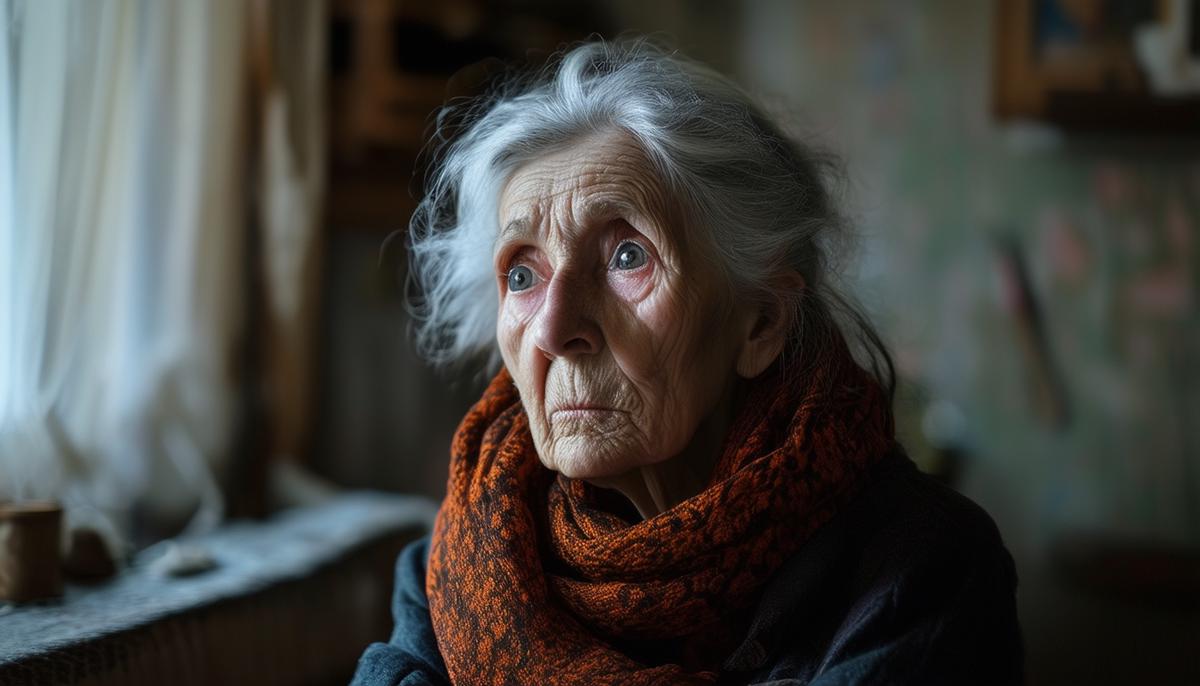
The Ghostly Return
Years can soften memories, but New Orleans never forgot the Axeman. Now and then, whispers would return—someone claiming to see a shadow vanish, or an old-timer hearing ghostly jazz at midnight. These stories became part of the city's lore.
One hot summer night, a young musician named Louis wandered the French Quarter, playing his saxophone. He loved the tales of the Axeman and how fear and music had mixed.
Louis stopped at an old bar said to be haunted. The bartender, Old Joe, greeted him warmly.
"Here for a drink?" Joe asked.
"Actually, I'd like to hear some stories," Louis replied. "About the Axeman."
Joe poured some bourbon. "They say he never truly left. He just found other ways to haunt this city."
Suddenly, the air grew cold. Louis felt uneasy.
"Play us a tune," Joe said, nodding at Louis's saxophone.
As Louis played, the shadows seemed to dance. The room grew darker.
"Do you feel that?" Louis whispered.
Joe nodded. "Keep playing, son."
The door creaked open, and a shadowy figure appeared—the Axeman.
Louis's heart raced, but he kept playing. The Axeman moved slowly, drawn to the music.
Then Louis realized: the Axeman came for the music, not for blood. As the last notes faded, the Axeman vanished.
"You see," Joe said, "music always tamed the beast."
As Louis left, he knew the story wasn't over. In New Orleans, the past was never far behind, especially when the music played on.
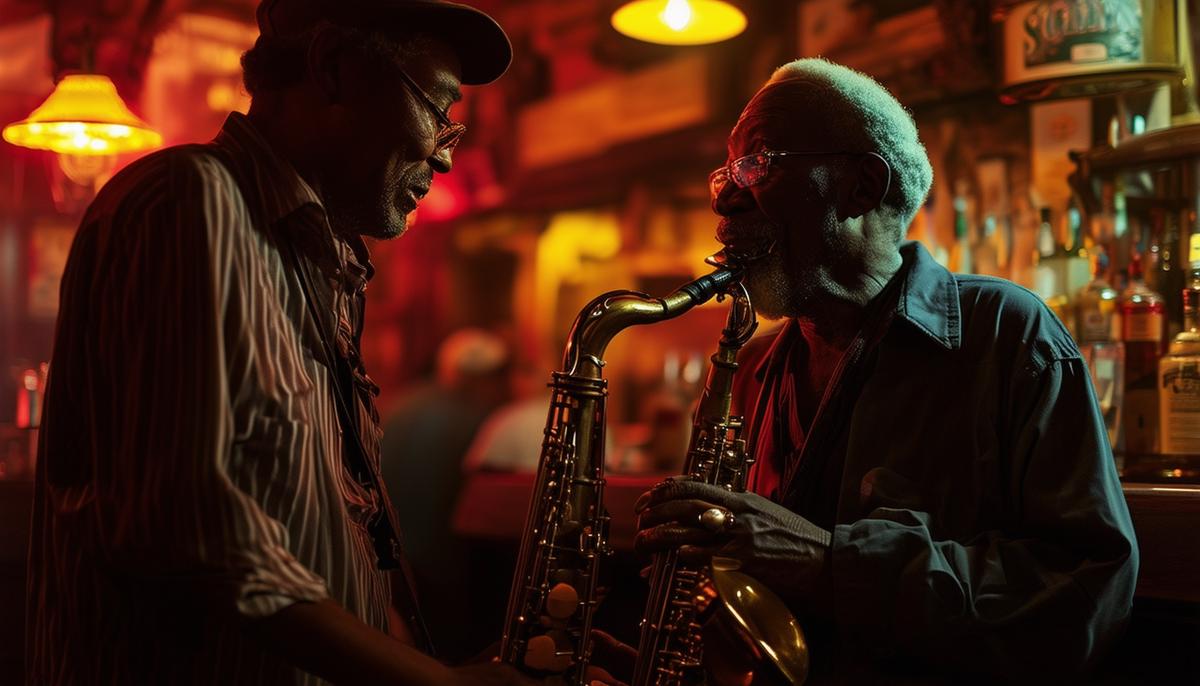
Epilogue: The Eternal Dance
Over time, the Axeman's tale became part of New Orleans. The city turned a scary story into a symbol of strength.
New Orleans, with its old streets and iron balconies, became a living reminder of this endless dance. Each sound of the saxophone and beat of the drum recalled the night the city stood together, brave in the face of fear.
To walk the streets of New Orleans was to step into a living storybook. At Preservation Hall, musicians still played as if the Axeman were listening.
In schools, children learned of the Axeman not just as a scary figure, but as an important part of their city's story—a city that faced darkness with the power of its own voice.
The Axeman's legacy was deeper than he meant it to be. He became a symbol of endurance, showing how people can face their fears.
When we think of New Orleans now, we see the joy of Mardi Gras and hear the soulful tunes from the French Quarter. But beneath this happy surface lies the soft, sad tune of a past not forgotten.
The Axeman remains a ghost in New Orleans' melody—forever part of its identity.
As the final notes fade into the night, we understand that the Axeman's story is not just scary, but also inspiring. It's about the endless dance between fear and hope, darkness and light, silence and song. In the end, the music always plays on, and New Orleans keeps dancing.
